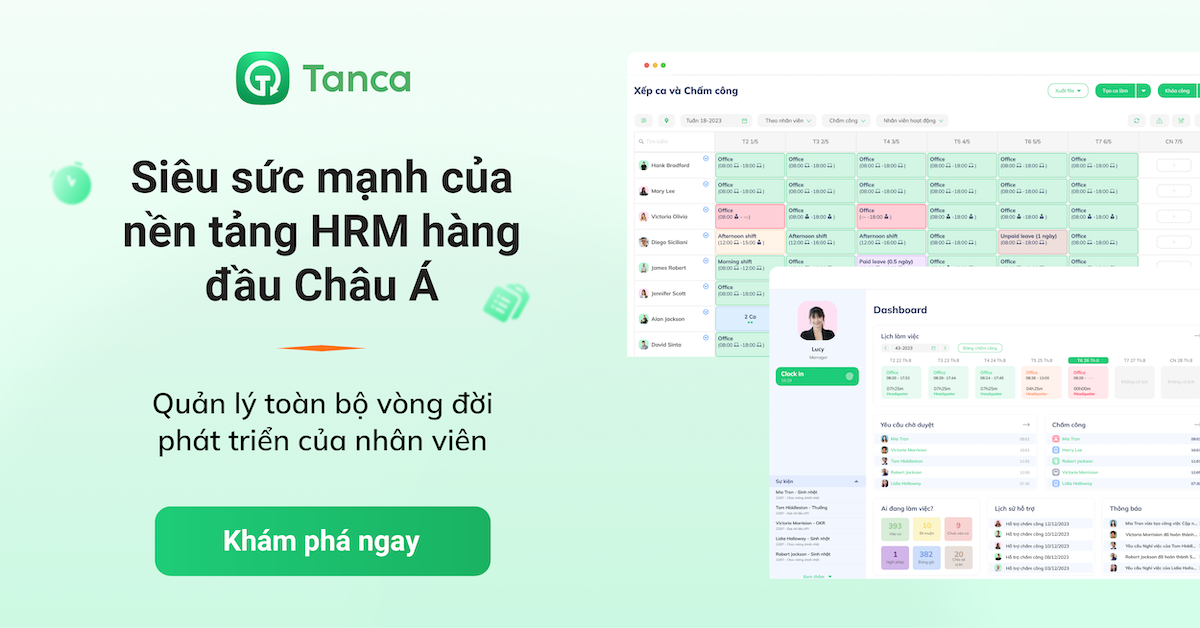In today's rapidly evolving workplace, understanding the top trends in global company culture is essential for leaders, HR professionals, and anyone involved in shaping organizational dynamics. As companies navigate the complexities of a diverse workforce, staying informed about best practices in culture can significantly impact employee engagement, retention, and overall success. In this post, Tanca will explore the latest trends that are redefining company culture worldwide, providing actionable insights for organizations looking to foster a positive and inclusive work environment.
What is Global Company Culture?

Global company culture is the shared set of values, beliefs, and practices that shape how an organization operates across different countries and cultures. If you're leading a team that spans multiple regions, you might find that fostering a cohesive culture is crucial for your success. This culture influences how your employees interact with each other, approach their work, and connect with the company's mission, making it essential for driving engagement and productivity.
As businesses have expanded globally over the past few decades, the importance of a strong global company culture has become increasingly clear. You may have noticed that companies with a well-defined culture attract top talent and retain employees better than those without one. When your team feels aligned with the company's values—no matter where they are in the world—they're more likely to collaborate effectively, innovate, and contribute to the organization's goals.
Trending Company Culture Examples

Google is famous for its innovative and flexible work environment. The company encourages employees to choose their workspaces, whether it's a collaborative open area or a quiet nook. Google promotes a culture of transparency through regular town hall meetings where leaders share company updates and encourage questions from employees. Initiatives like "20% time," where employees can spend a portion of their workweek on passion projects, foster creativity and innovation, leading to successful products like Gmail and Google News.
Netflix
Netflix has cultivated a unique culture centered around the principles of freedom and responsibility. The company trusts its employees to make decisions that align with the company's goals, which fosters a sense of ownership. Netflix's famous "Culture Deck" outlines its expectations for high performance, including radical honesty and transparency in communication. This approach empowers employees to take risks and innovate while maintaining high standards, contributing to Netflix's position as a leader in the entertainment industry.
Airbnb
Airbnb emphasizes inclusivity and belonging, encapsulated in its motto "Belong Anywhere." The company actively seeks feedback from employees through regular surveys and open forums, ensuring that everyone’s voice is heard. Airbnb promotes flexible work arrangements, allowing employees to choose remote or in-office work based on their preferences. Additionally, the company invests in employee development through programs that support career growth and personal well-being, creating a supportive environment that nurtures talent.
Adobe
Adobe fosters a culture of creativity by encouraging employees to take ownership of their projects. The company implements a "Check-In" system instead of traditional performance reviews, focusing on ongoing feedback and career development discussions. Adobe also provides resources for continuous learning through its Adobe Learning Fund, which supports professional development courses and workshops. This emphasis on creativity and personal growth helps employees feel empowered and engaged in their work.
Patagonia
Patagonia is renowned for its commitment to environmental sustainability and social responsibility. The company encourages employees to participate in activism related to environmental issues through paid volunteer time. Patagonia's culture promotes work-life balance, allowing staff to pursue outdoor activities that align with the company's mission. By integrating environmental values into its corporate identity, Patagonia attracts like-minded individuals who are passionate about making a difference.
Zappos
Zappos is celebrated for its strong clan culture focused on employee happiness and customer service excellence. The company invests heavily in training programs that emphasize core values such as delivering WOW through service and embracing change. Zappos encourages employees to express their personalities at work, fostering a fun atmosphere where creativity thrives. Their unique hiring process includes cultural fit assessments to ensure new hires align with the company's values, creating a cohesive team dynamic.
Salesforce
Salesforce promotes a culture of equality and inclusion through initiatives like the "Ohana" philosophy, which treats employees as family. The company actively works towards creating a diverse workforce by implementing hiring practices that prioritize underrepresented groups. Salesforce invests in employee well-being with comprehensive mental health programs, wellness reimbursements, and flexible work options. This commitment to inclusivity not only enhances employee satisfaction but also drives innovation by incorporating diverse perspectives.
Zoom
Zoom has gained recognition for its supportive workplace culture that prioritizes employee wellness. The company offers extensive benefits packages that include mental health resources, fitness reimbursements, and flexible schedules. Zoom encourages open communication through regular check-ins between managers and team members, fostering an environment where feedback is valued. This focus on employee well-being has contributed to high levels of engagement and productivity within the organization.
IKEA
IKEA's culture is rooted in values such as equality, simplicity, and teamwork. The company emphasizes collaboration among employees by encouraging cross-functional teams to work together on projects. IKEA also invests in employee development through training programs that promote leadership skills and career advancement opportunities. By creating an inclusive workplace where everyone feels valued, IKEA fosters loyalty among its workforce while driving business success.
Costco
Costco is known for prioritizing employee well-being by offering competitive wages and benefits packages that exceed industry standards. The company's culture emphasizes teamwork and collaboration, encouraging employees to support one another in achieving common goals. Costco invests in employee training programs that promote skill development and career growth within the organization. This commitment to employee satisfaction translates into high retention rates and exceptional customer service.
Best Practices for Building a Strong Global Company Culture

Shaping and communicating your company culture can feel overwhelming. You may question which elements are essential and which can be set aside, depending on your industry or business stage. Here's a breakdown to help you prioritize what truly matters.
Essential Elements You Can’t Ignore
1. Define and Communicate Your Core Values
This is non-negotiable! Your core values are the foundation of your company culture. Make sure they’re clear, concise, and communicated consistently across all channels. Everyone in your organization should understand what these values mean and how they guide daily operations. This clarity helps employees feel connected to the mission and motivates them to embody those values in their work.
2. Foster Inclusion and Diversity
Creating an inclusive environment isn’t just a nice-to-have; it’s essential for fostering innovation and collaboration. Encourage diverse perspectives and ensure everyone feels valued. This can be as simple as promoting open dialogue or as structured as implementing diversity training programs. Remember, a diverse team brings a wealth of ideas that can drive your business forward.
3. Align Culture with Your Mission and Vision
Your culture should reflect your mission and vision. If your company is focused on innovation, for example, then your culture should encourage creativity and risk-taking. Ensure that your employees see how their work contributes to the bigger picture—this alignment will inspire them to engage more deeply with their roles.
4. Lead by Example
As a leader, your actions speak louder than words. Model the behaviors and values you want to see in your organization. When employees see leadership embodying the culture, they’re more likely to follow suit. Be transparent, approachable, and consistent in how you communicate and make decisions.
Recommended Practices That Add Value
1. Localize Cultural Initiatives
While your core values should be universal, don’t forget to adapt cultural initiatives for local contexts. What works well in one region might not resonate in another. Tailoring events or recognition programs to fit local customs shows respect for diversity within your workforce.
2. Empower Employees as Culture Champions
Identify enthusiastic employees who can act as culture champions within teams. These individuals can help spread positivity and reinforce cultural values among their peers, creating a grassroots movement that strengthens the overall culture.
3. Provide Cultural Training
Investing in training that educates employees about different cultures within the organization can pay off immensely. It fosters mutual respect and understanding, making collaboration smoother across diverse teams.
Global Company Culture Trends in 2024
1. Prioritizing Employee Well-being
Employee engagement remains a top priority for organizations this year. With many employees feeling disconnected, companies are focusing on creating more engaging work environments. Strategies include providing continuous feedback, enhancing training programs, and implementing robust recognition platforms. Leaders are encouraged to actively seek employee input and foster a culture where everyone feels valued and heard.
2. Embracing Flexibility in Work Arrangements
The demand for flexible work schedules continues to grow. Employees are increasingly seeking options that allow them to balance their personal and professional lives effectively. Organizations are responding by offering hybrid work models and flexible hours, recognizing that this flexibility can lead to higher productivity and job satisfaction. A recent survey by FlexJobs found that 80% of employees would be more loyal to their employer if they had flexible work options.
3. Fostering Diversity, Equity, and Inclusion (DEI)
Diversity, equity, and inclusion are no longer just initiatives; they are fundamental aspects of company culture in 2024. Organizations are embedding DEI principles into their core values and practices, striving for diverse representation at all levels. This trend emphasizes the importance of creating an inclusive environment where all employees feel valued and empowered to contribute.
4. Investing in Continuous Learning and Development
As industries evolve rapidly, continuous learning is becoming essential for employee growth and retention. Companies are investing in training programs that provide employees with opportunities to develop new skills and advance their careers. LinkedIn's 2024 Workplace Learning Report indicated that 94% of employees would stay longer at a company that invests in their career development. Organizations are focusing on creating a culture of learning that encourages innovation and adaptability.
5. Promoting Sustainability as a Core Value
Sustainability is increasingly becoming a core value for organizations as they recognize the importance of environmental responsibility. Companies are adopting eco-friendly practices, such as reducing waste, using sustainable materials, and promoting remote work to lower carbon footprints. This commitment not only attracts environmentally conscious talent but also enhances brand reputation among consumers.
Evaluating and Improving Company Culture
1. Gather Employee Feedback
One of the most effective ways to evaluate company culture is to solicit feedback directly from employees. This can be done through various methods:
- Surveys: Conduct employee satisfaction surveys that include questions about workplace culture, leadership transparency, and social responsibility. Tools like Google Forms or specialized platforms such as Culture Amp can help gather quantitative data. Consider including both multiple-choice questions and open-ended responses to capture a range of insights.
- Interviews and Focus Groups: Organize one-on-one interviews or focus group discussions to dive deeper into employee experiences. This qualitative approach allows for richer insights into how employees perceive the culture and what improvements they suggest.
- Pulse Surveys: Implement regular pulse surveys to gauge employee sentiment on specific topics, such as communication or teamwork, allowing for timely adjustments based on feedback.
2. Monitor External Indicators
External indicators can provide valuable insights into your company culture:
- Review Sites: Regularly check platforms like Glassdoor and Indeed for employee reviews. These sites often reveal honest feedback about the company’s strengths and weaknesses, helping identify cultural misalignments.
- Industry Benchmarks: Compare your organization’s culture with industry standards or competitors. This can help identify areas where you may be lagging behind or excelling.
- Awards and Recognition: Look at any awards your company has received related to workplace culture or employee satisfaction. These accolades can serve as benchmarks for improvement and highlight areas of strength.
3. Assess Alignment with Core Values
Conduct a values assessment to determine whether your organization is living its stated values. This involves:
- Behavioral Reviews: Integrate values into performance reviews by assessing how well employees embody these values in their daily work. For example, if collaboration is a core value, evaluate how effectively employees work with their peers.
- Employee Surveys: Include questions in your surveys that ask employees how well they believe the organization lives up to its stated values. This feedback can help identify gaps between stated values and actual behaviors.
4. Observe Workplace Dynamics
Pay attention to the day-to-day interactions among employees:
- Behavioral Observations: Observe how employees interact in meetings, during breaks, and in collaborative settings. Look for signs of engagement, enthusiasm, or disengagement that may indicate underlying cultural issues.
- Physical Environment: Evaluate the workplace environment itself—are there spaces that promote collaboration or creativity? A well-designed workspace can significantly impact employee morale and productivity.
5. Implement Changes Based on Feedback
Once you’ve gathered data and insights, it’s crucial to take action:
- Create an Action Plan: Develop specific strategies based on the feedback received from employees. This could involve enhancing communication practices, providing more professional development opportunities, or addressing issues related to workload distribution.
- Communicate Changes: Keep employees informed about the changes being made in response to their feedback. Transparency fosters trust and shows that leadership values employee input.
- Monitor Progress: After implementing changes, continue to measure their impact through follow-up surveys and feedback sessions. This ongoing evaluation will help ensure that improvements are effective and aligned with employee needs.
Conclusion: Towards a Sustainable Global Company Culture
We hope that after reading this, you feel more confident in navigating the trends shaping global company culture today. By focusing on key areas like employee recognition, diversity, and flexibility, you're already taking important steps toward building a cohesive and positive work environment. To achieve even better results, consider using tools like Tanca to streamline your HR processes and gather valuable employee feedback. This way, you can foster a truly inclusive and engaging culture that drives success and innovation for your organization.










